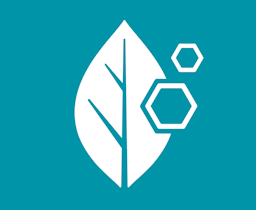Ending the spring time sneeze
What does it take to ease the effects of hay fever?

Hay fever must rank as one of the most annoying afflictions on the planet. One minute you’re happily minding your own business, the next you’re sneezing constantly and your nose is streaming. And if you don’t get on top of it, you know what’s coming next – an aching head and infuriatingly itchy eyes that are so red and puffy that you look like you’ve got two cherry tomatoes sitting under your eyebrows. It’s not attractive, and it’s certainly not pleasant.
Hay fever is often viewed as trivial, but it does have a major impact on sufferers’ quality of life. Aside from the symptoms themselves, it also affects your ability to think and concentrate, so it may reduce your ability to be productive at work or carry on with your daily activities. More importantly, hay fever attacks can trigger asthma, and may also lead to sinus infections and ear problems if not adequately treated. With around one in five Australians affected to some degree, asthma accounts for around eight per cent of our annual healthcare expenditure – that’s a lot of sneezes. And if you think it’s getting worse, you’re right.
Like other forms of allergy, hay fever (more correctly referred to as allergic rhinitis) is becoming more common. In 1968, just under per cent of Tasmanians were reported as being affected by hay fever at some time in their lives. Fast forward to the early 1990s and the incidence had more than doubled to 41 per cent.
So what’s going on?
When you get an infection such as a cold or flu, your immune system mobilises quickly to fight off the invading organism. During an allergic reaction a similar phenomenon is occurring, but the problem is the invader your immune cells are trying to overcome is not a disease-bearing microbe at all, but something innocuous that you should be able to be exposed to in your diet, or in the environment around you, without any issues3. Dust mites, animal fur and mould are all common allergens and triggers of allergic reactions. And so is pollen – hence the seasonal nature of hay fever and the increased likelihood that you’ll develop symptoms on a windy day.Your nose is one of your body’s first lines of defence against invaders. The fine hairs inside your nostrils act as a filter to help trap foreign particles such as dust and pollen and prevent them from entering your body. The mucous membranes that line your nasal passages are also part of this defence system, and just beneath their surface lie specialised immune cells called mast cells.
When the lining of your nose comes into contact with a substance you’ve previously been sensitised to (i.e. an allergen), the mast cells release histamine and a range of other chemical mediators that are designed to throw off the perceived invader. For example, your streaming nose is an attempt by the body to flush out the offender by literally washing it away. This initial stage all happens very quickly, and within minutes you can be experiencing a full-blown episode of hay fever with the characteristic symptoms of an itchy nose, sneezing, and watery discharge. After a few hours later phase of the allergic response occurs in which congestion and puffiness become the predominant symptoms.
What can be done?
Horesradish garlic and vitamin C offer relief from the symptoms of hayfever and can help reduce the severity of symptoms of allergic reactions.Supporting your immune system nutritionally may help you better manage your hay fever. Start by making sure you eat lots of fresh fruit and vegetables every day, and also include fresh nuts and seeds in your diet on a regular basis. That means you’ll be getting good levels of antioxidants, particularly vitamins C and E.
High levels of vitamin E appear to offer some protection from hay fever, and are also associated with a decreased tendency to become sensitised to allergens. Research also indicates that taking additional vitamin E in high doses (up to 1200IU per day, in conjunction with other hay fever treatment), may reduce the severity of nasal hay fever symptoms. Researchers believe that the antioxidant actions of vitamin E may help to explain this effect by helping to reduce the body’s overall level of immune inflammation. Vitamin E also has effects on histamine levels in the body.
Similarly, vitamin C helps to prevent the secretion of histamine, and aids your body in detoxifying it. We also know that high levels of histamine are associated with low levels of vitamin C, so it’s important to keep up your intake of this important nutrient. In an experimental setting very high doses (2g) have also been shown to accelerate recovery time from histamine exposure in allergic rhinitis sufferers.
Other natural therapies to relieve hay fever could include vitamin A for maintenance of healthy mucous membranes of the nose, throat and eyes and and fenugreek also help to dry up discharge.
Jayne Tancred ND is a naturopath, herbalist, nutritionist and health writer. She contributes regular features for Nature & Health magazine, is the author of Healthy Vitamins and Minerals (Lifetime Distributors) and chief Australian consultant for Nature’s Medicines (Reader’s Digest).

Blackmores The articles produced by Blackmores are authored by a dedicated team of expert writers who tailor their content to address topics that resonate with our community's interests.
- DATE
- 24 Oct 2023
- AUTHOR
- Blackmores
- CATEGORY
- SHARE